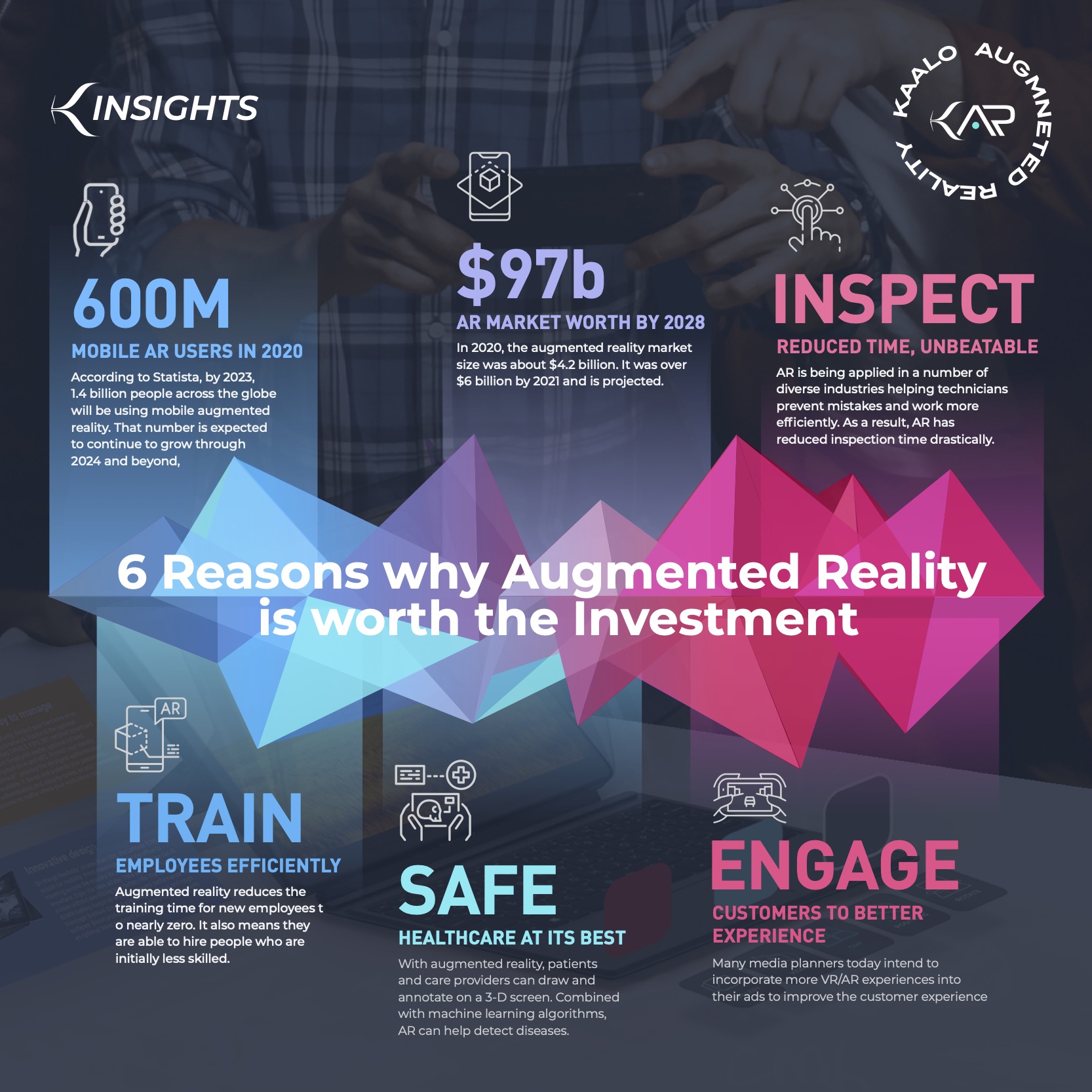There is a lot of talk about virtual reality these days, with Facebook rebranding as Meta and their declared focus on creating the Metaverse — a completely digitally generated world in which users can work and play. But augmented reality — technology that projects digital enhancement onto our existing world — is being applied in a number of different industries as diverse as large machine manufacturing and shopping for makeup. AR has begun to take hold of the manufacturing and retail world with much more potential. Here are some reasons AR is the tech to watch.
Mobile AR had 600 million users worldwide in 2020
That number is on the rise. According to Statista, by 2023, 1.4 billion people across the globe will be using mobile augmented reality. That number is expected to continue to grow through 2024 and beyond, as more apps make use of smartphones’ existing ability to support AR technology.
The AR market will be worth over $97 billion by 2028
In 2020, the augmented reality market size was about $4.2 billion. It was over $6 billion by 2021 and is projected to keep growing. While AR took a small dip during the pandemic, it has rebounded nicely and continues to grow. (Fortune Business Insights)
Augmented Reality has applications in the industrial sector
AR’s overlay of digital information on a real-world environment helps technicians prevent mistakes and work more efficiently. Newport News Shipbuilding, a designer of U.S. Navy aircraft carriers, uses AR to inspect newly built ships. The digital projections highlight construction structures, not part of the finished product, that must be removed. AR has reduced inspection time from 36 hours to just 90 minutes. (Harvard Business Review, 2019)
AR can make education more efficient
According to Michael Porter, some companies are already using augmented reality to reduce the training time for new employees to nearly zero. It also means they are able to hire people who are initially less skilled. Package delivery company DHL has found this especially advantageous with their seasonal hires during peak shipping times. (Harvard Business Review, 2019)
Augmented reality is already used in healthcare
With augmented reality, patients and care providers can draw and annotate on a 3-D screen during telehealth visits. When combined with machine learning algorithms, AR can help detect diseases such as cancer. Google’s 2020 announcement for an AR-based microscope for the Department of Defense is just such an example. Real-time camera images are processed with computer diagnostics to diagnose disease at an early stage. (mobidev.biz)
AR-enabled advertising is engaging customers
The L’Oreal YouCam makeup app was downloaded 3.5 million times in 2018. Many media planners today intend to incorporate more VR/AR experiences into their ads to improve the customer experience. (Assemblr) In fact, AR ad experiences are reportedly twice as engaging as their non-AR equivalents.

